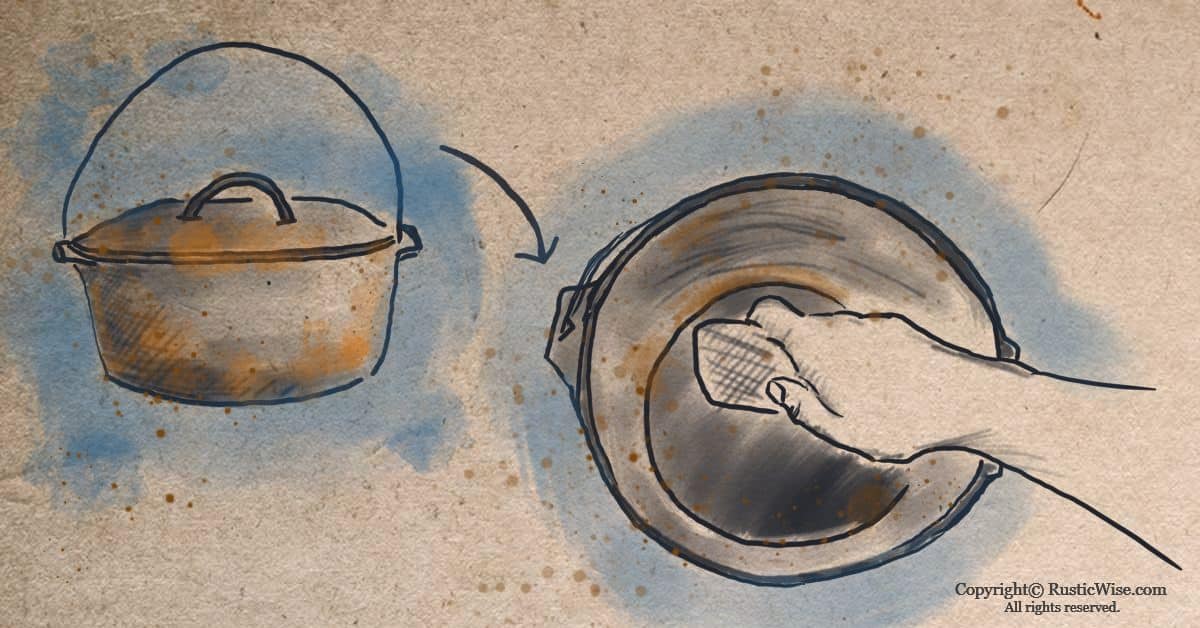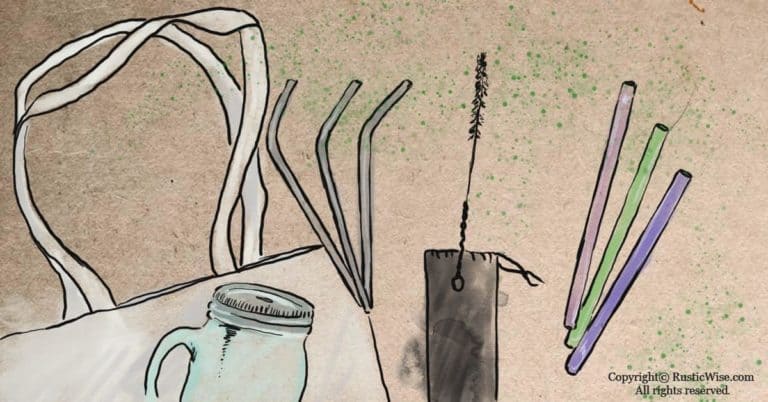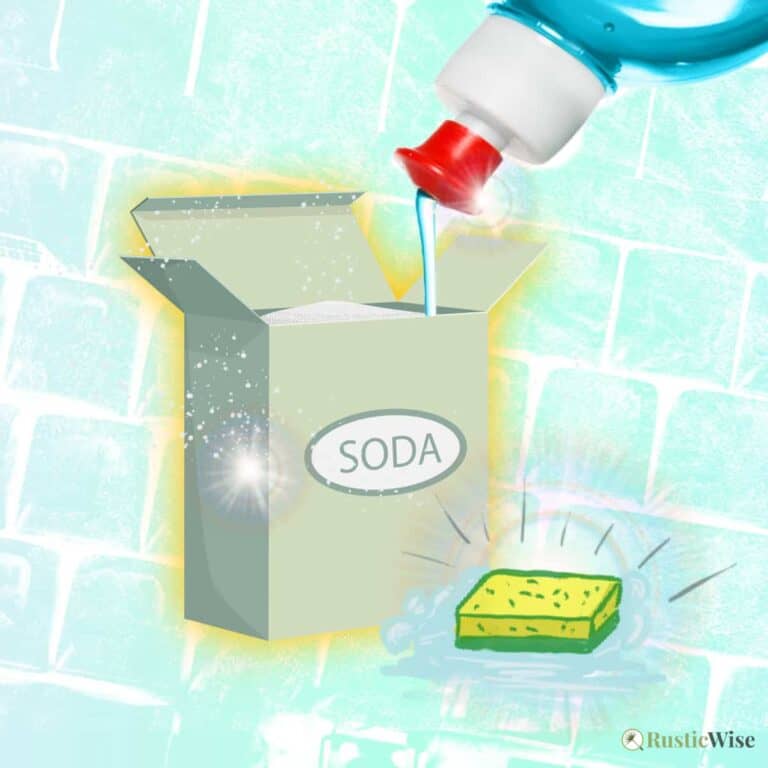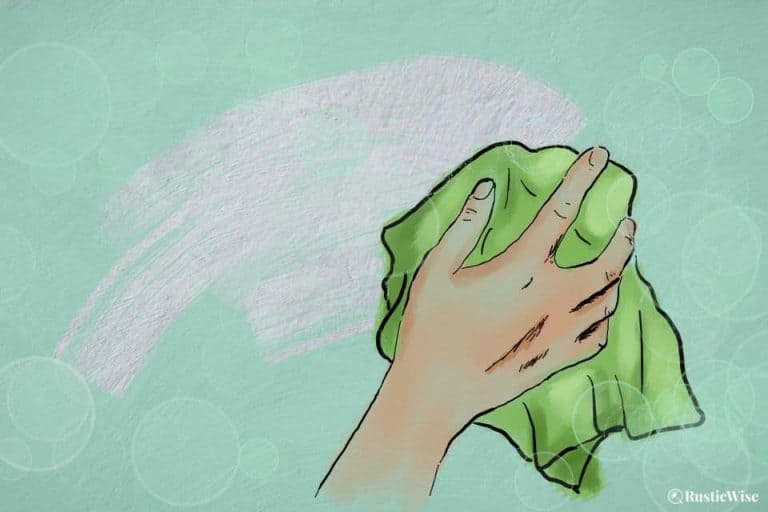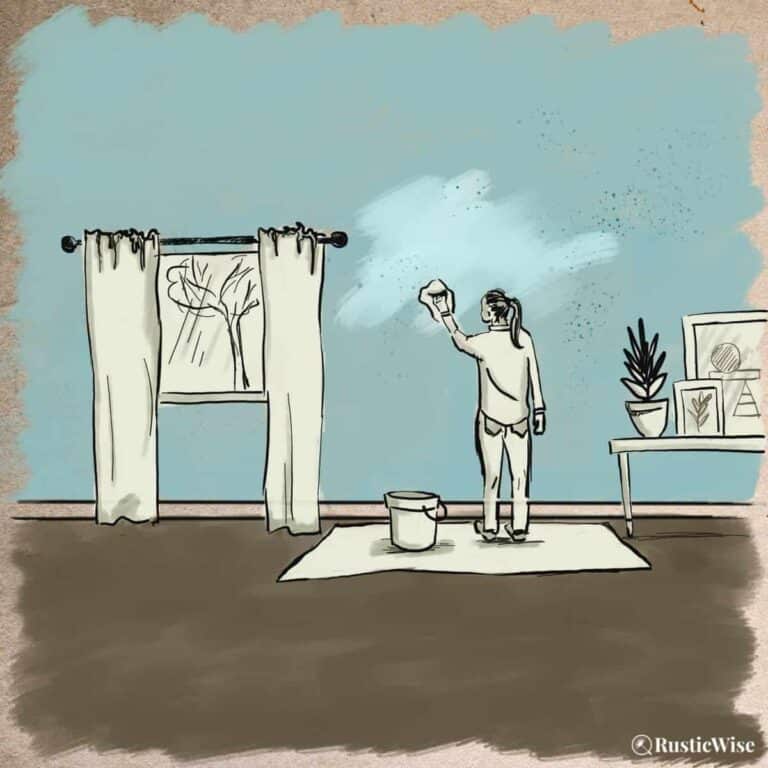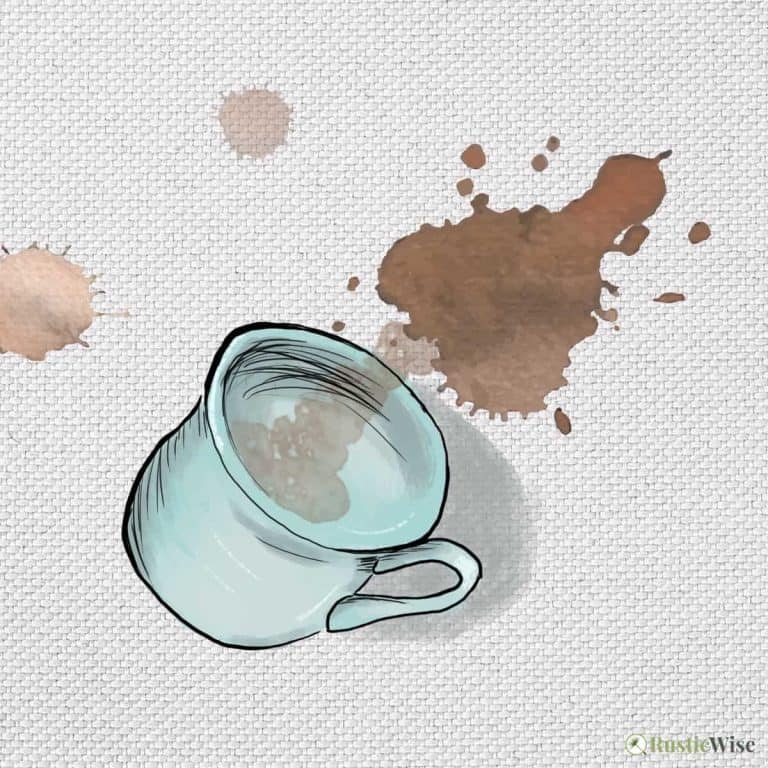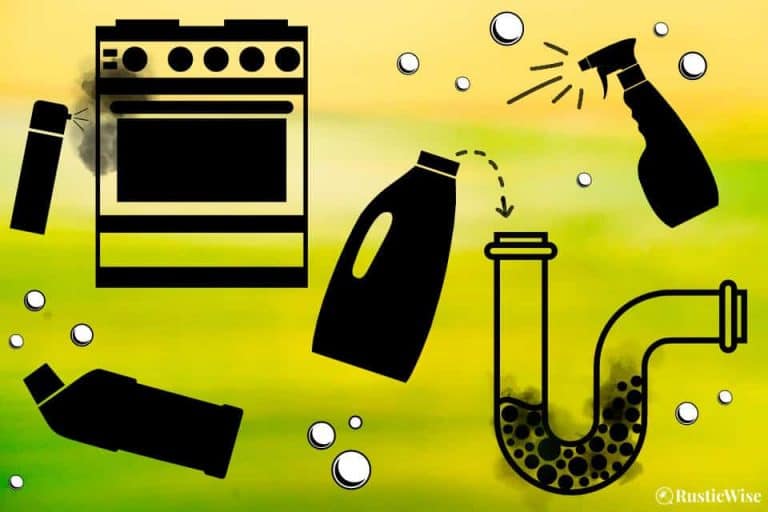How Do You Clean an Old Dutch Oven?
A Dutch oven is a “forever” type of kitchen cookware that lasts a lifetime, or more. Maybe you’ve inherited your grandmother’s rusty Dutch oven, or perhaps your cast iron Dutch oven has been sitting for years neglected.
While cast iron is durable, it’s a porous metal that easily oxidizes if stored improperly (putting it away while still wet), or if the nice protective layer has worn off.
Don’t despair. With a bit of elbow grease, you can restore your old Dutch oven to its former glory. So how do you clean an old Dutch oven? Depending on the condition it’s in, you can try a few different methods such as: scrubbing, applying heat, giving it a vinegar or Coca-cola bath, or for the ultimate deep clean—using the self-cleaning option in your electric oven. Remember to give your Dutch oven a bit of love (and several coats of seasoning afterwards).
This post focuses mainly on cleaning rusted cast iron cookware, but first a quick note on cleaning enameled cast iron.
How do you clean enameled cast iron?
Unlike its simpler cast iron counterpart, enameled cast iron Dutch ovens have a slick coating inside and out to prevent food from sticking. Enameled Dutch ovens aren’t prone to rusting and seasoning it isn’t required. Clean up is also easier (using soap isn’t a problem!), however sometimes these pretty Dutch ovens chip.
If you happen to have baked on food that’s difficult to remove on your enameled cast iron, you can try a few things:
- Soak overnight with hot, soapy water. The combination of heat, soap to remove grease, a sprinkle of baking soda as a gentle abrasive, and time helps to loosen most stubborn food. Remember to put the lid on overnight!
- While dishwasher safe, it’s best to hand wash when trying to remove difficult stuck-on food. Never use steel wash pads or other abrasive brushes that might damage the enamel coating. Try using a plastic scraper to chip off food.
- If you still have stains on the bottom, you can fill your Dutch oven with water and bring to a boil. Add a few spoonfuls of baking soda and let it bubble for several minutes. Use a non-abrasive utensil like a wooden spoon to gently scrape away the stains.
How to remove rust from a cast iron Dutch oven
So, how do you clean an old Dutch oven? There are many ways of cleaning a rusty Dutch oven with some methods requiring harsher methods than others.
Whichever method you decide to use, remember to reseason your cast iron skillet afterwards with several layers to prevent further rusting, paying extra attention to areas with pockmarks, dents, or scratches.
So take a look at your neglected oven and assess the rust situation:
- Where is the rust located? If it’s just along the lid or a few outside areas, a simple spot treatment should do. If it’s all around the inside, you might need something more.
- How much rust is there? If it’s all over, you might as well jump straight down to Method #4: Using the self-cleaning setting in your oven.
Method 1: Scrubbing
The simplest method just requires using a bit of elbow grease. This method works if you only have a bit of rust here and there.
Fill your sink with soapy, hot water (yes, I said soap!) and let your rusty Dutch oven soak for a few minutes before scrubbing. While soap is not normally required to regularly clean a Dutch oven, we’re dealing with rust, so we’re allowed to bend the rules here. Try using a stiff-bristled brush first. If this doesn’t work, you can try using a coarse steel wool pad, such as an SOS pad and scrub until rust is removed.
Once rust is removed, thoroughly dry your Dutch oven and reseason.
Method 2: The vinegar bath
Maybe you tried scrubbing and the rust is still there, as stubborn as ever. You can try using the natural cleaning power of good ol’ white distilled vinegar.
Fill a large basin with half water and half vinegar. Carefully submerge your cast iron skillet and lid in the solution. Set your timer! You don’t want to let your Dutch oven sit too long in the acidic vinegar solution. Let your rusty Dutch oven soak between 30-60 minutes.
Use a stiff brush to scrub out the rust. Rinse well, dry thoroughly, and reseason.
Method 3: The Coca-Cola soak
While I’ve never used Coca-Cola to clean my Dutch oven, I have used it to remove rust and stains from plenty of other household objects. The carbonic acid in Coca-Cola is the secret to removing hard-to-remove stains and rust.
Soak your Dutch oven in Coca-Cola for an hour or so (or overnight if it’s really rusty) to slowly dissolve rust. If the rust is on the outside, apply some with a cloth and let it sit. Rinse well, dry, and reseason.
Method 4: Using the self-cleaning setting in your oven
This method is intended only if you have a rust bucket on your hands, an old family heirloom that requires a lot of TLC, or one you picked up at a yard sale. Most ovens nowadays have a self-cleaning option. Use the self-cleaning option if you need to strip away rust down to the cast iron.
Before you start, you’ll want to remove the oven racks first as they might become discolored during this process. Next, find a brick or some type of oven-safe cookware; you’ll use this item to prop up the Dutch oven so it’s not resting on the oven’s heat source. Now run the self-cleaning option.
Everything looks ashy once the cleaning cycle is complete. Now it’s time to give your newly-cleaned and rust-free Dutch oven a good wash with soapy water and a scouring pad. Of course you’ll need to give it several layers of reseasoning afterwards.
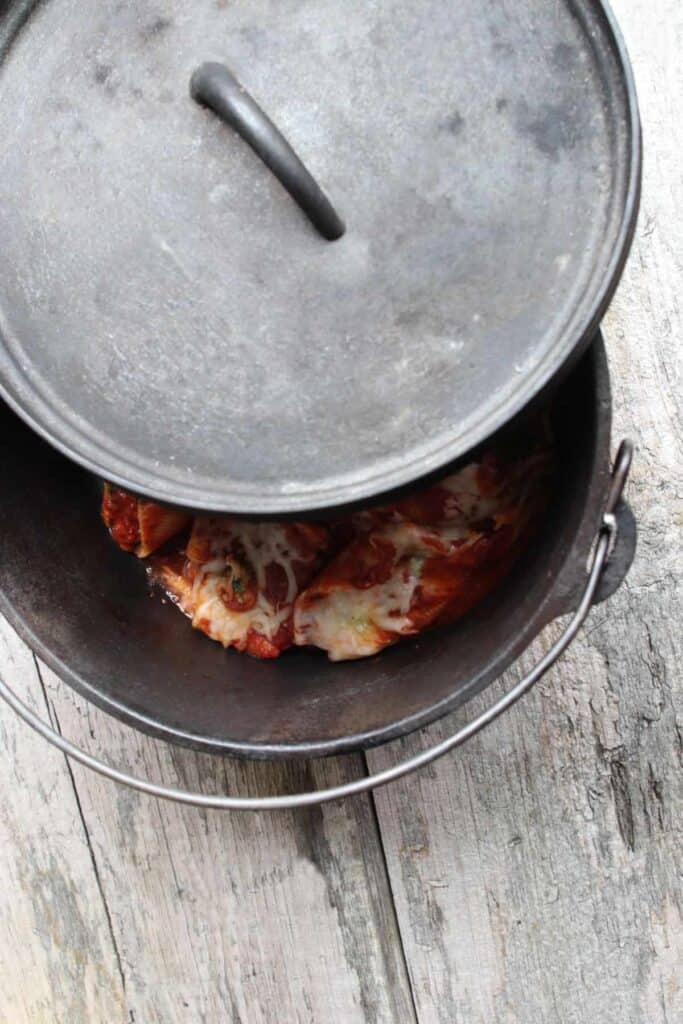
How to deep clean a cast iron Dutch oven
Sometimes you might not have rust, but feel like your Dutch oven is in need of a deep clean. If you’ve noticed baked on black flecks along the bottom, this is a sign of a dirty Dutch oven.
First you’ll want to scrape off any stuck on food bits with a plastic scraper, spatula, or very carefully with a butter knife. There are a few different options you can try next.
Remember that you’ll need to reapply oil to your Dutch oven after to preserve the finish.
Method 1: Applying heat
Add some hot water to your Dutch oven and let it sit for 20-30 minutes. You can try bringing the water to a boil on a stovetop or over a campfire for more heat. Once the oven has cooled a bit and the stuck on food has softened, use a stiff brush to remove the remaining food.
Food still stuck on?
You can try applying more heat by placing the Dutch oven upside down over a campfire or in your oven at 300 degrees Fahrenheit (149 degree Celsius) for several minutes. This will turn all food bits to ash. Once it has cooled, scrape off the burnt bits, and wash. You’ll need to reseason your Dutch oven again.
Method 2: Salt and oil scrub
Coarse sea salt or kosher salt is a great natural ingredient with abrasive properties. Salt when combined with oil and some heat is great at stripping off all stuck on food, and can even remove some rust.
Preheat your kitchen oven or outdoor barbecue to 300 degrees Fahrenheit (149 degree Celsius) and place your Dutch oven in for 10 minutes. Once it has cooled enough to touch, dump in a mixture of salt and olive oil, or vegetable oil. Aim for 2 parts salt to 1 part oil. Using a cloth, scrub this mixture over all areas that need cleaning. Add more salt and oil as needed.
Wash well afterwards, and dry thoroughly by placing back in oven for several minutes. Now you’ll need to reseason again.
Now keep your Dutch oven clean from now on!
Of course the best way to prevent baked on food and rust is to clean your Dutch oven immediately after use. Just fill it with boiling hot water and let it soak before cleaning. Remember to thoroughly dry your cast iron skillet before storing away.
Now after scrubbing off rust and deep cleaning your Dutch oven, check out how to properly season a Dutch oven.
👉 If you like this post, see other Timeless Cleaning Tips You Need To Know. 🌟
Would you like more timeless tips via email?
Fun tips to help you live an independent, self-sustaining lifestyle. Opt-out at any time.


Author: Josh Tesolin
Josh is co-founder of RusticWise. When he’s not tinkering in the garden, or fixing something around the house, you can find him working on a vast array of random side projects.

